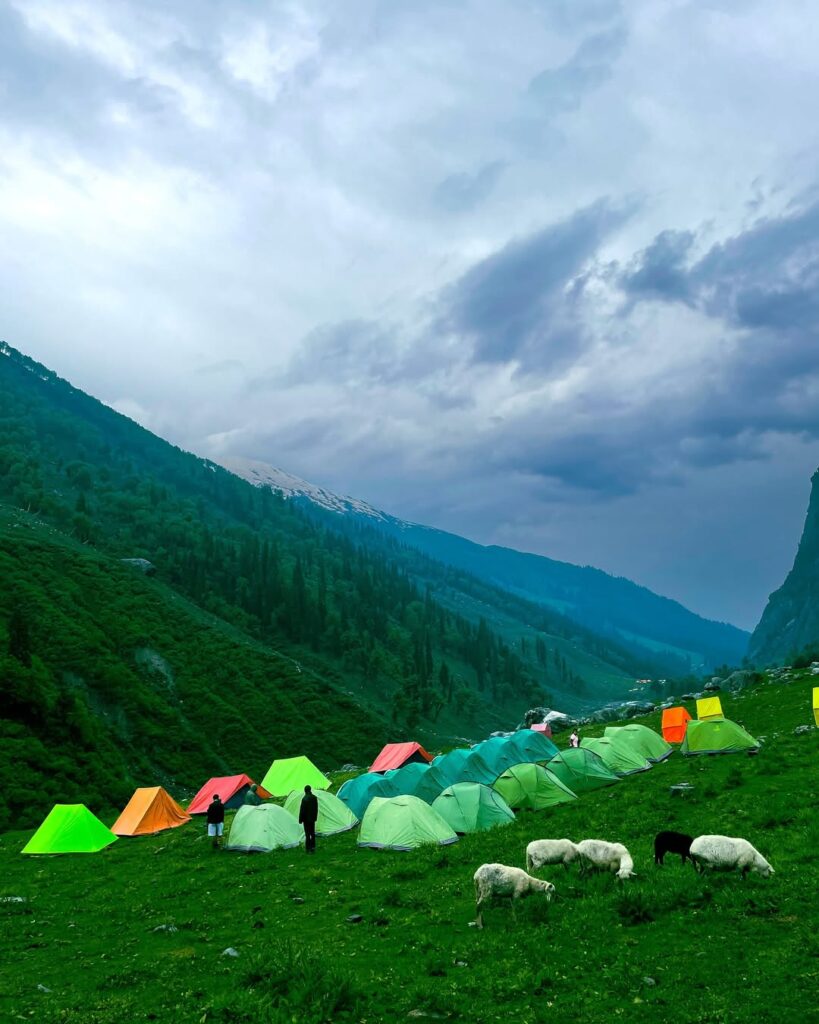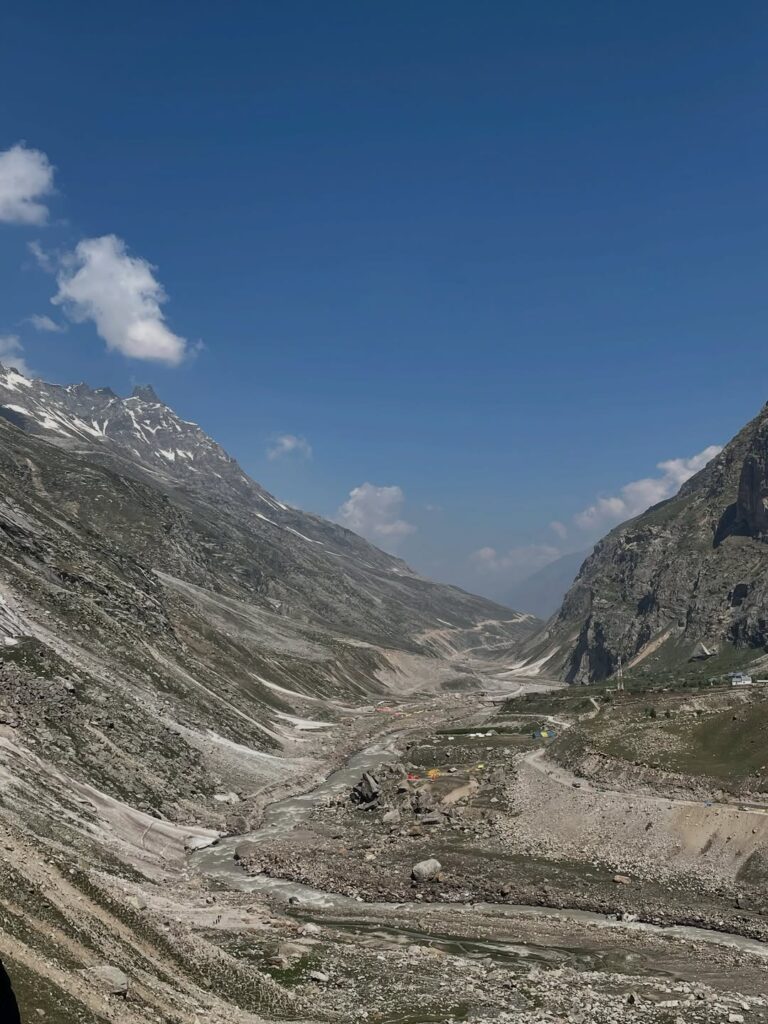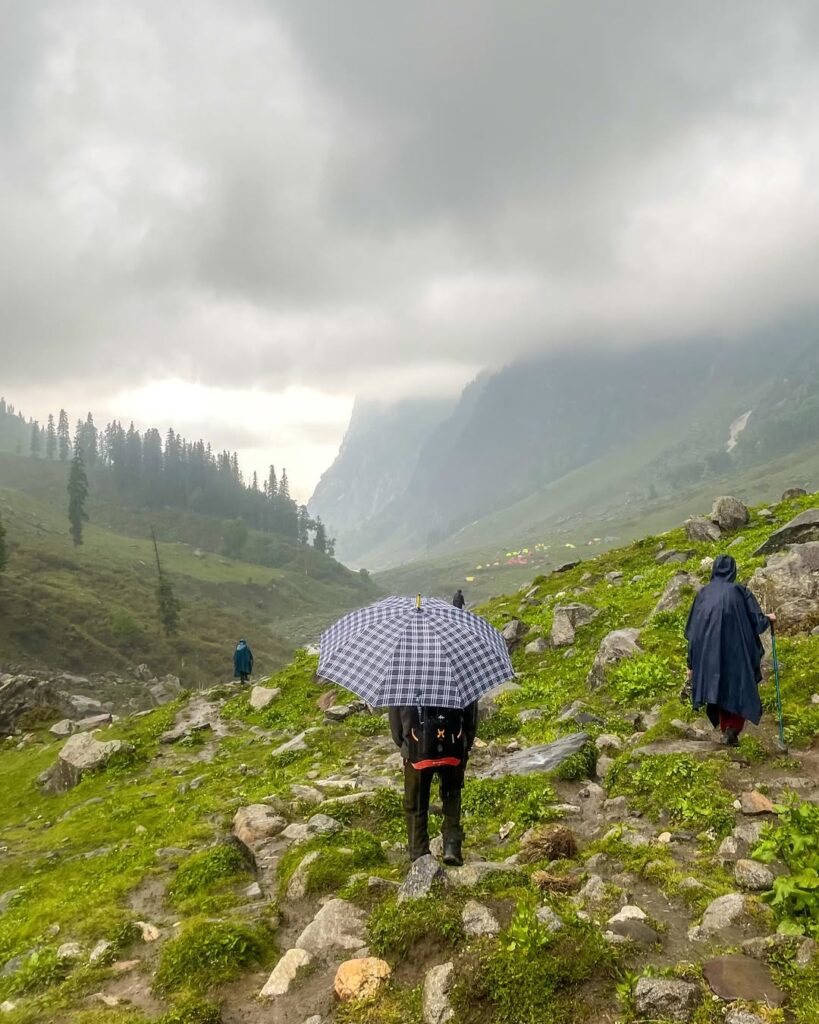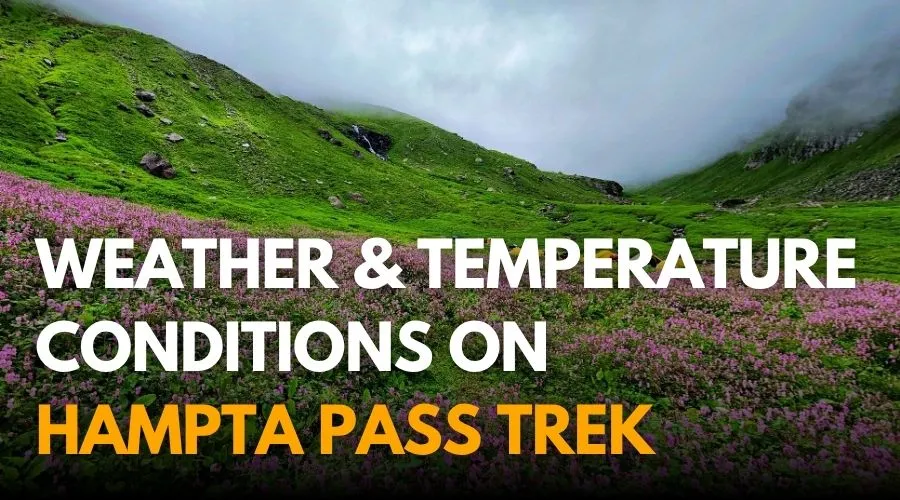Weather plays a crucial role in planning any trek, especially in Himachal Pradesh, where conditions can change rapidly at high altitudes. Being aware of seasonal temperatures, snowfall, and rainfall helps you prepare better, avoid risks, and enjoy a safer and more rewarding trekking experience.
Before planning the Hampta Pass trek, you must carefully understand its Weather and the temperature conditions up there to enjoy a smooth and convenient trip. It experiences exhilarating weather due to being highly settled across the western Himalayas. Also, it becomes crucial to be aware of these climate factors, as the high-altitude camping spots often undergo unpredictable changes that can turn a memorable journey into a challenging trek.
Apart from this, the Hampta Pass is accessible almost throughout the year and is in very much demand among thrill seekers, professional trekkers, and nature enthusiasts. Its majestic scenery attracts tourists from all over the nation, making them instantly fall in love with its unique settings.
Table of Contents
Introduction to Hampta Pass Trek
Hampta Pass is one of those rare treks in Himachal Pradesh that lets you witness two very different worlds in just a few days. The trail starts in the green and lively Kullu Valley and takes you all the way to the dry, dramatic landscapes of the Chandra Valley in Lahaul. This beautiful contrast makes the Hampta Pass Trek a perfect example of a classic mountain pass crossing. The trek lies in the rain shadow of the Pir Panjal range and passes through a high altitude of about 4,290 meters (14,100 feet). Located near Manali, it offers a unique experience that combines lush forests, alpine meadows, and stark, Spiti-like terrain- all in one journey.
Let’s explore the best time to visit, the weather breakdown, road conditions, packing essentials, and other important factors. For better understanding, read the blog till the end.
Best Time to Visit Hampta Pass

To secure a prime trip, it’s advisable to learn about the best time to visit. Hampta Pass Trek is usually done between the months of June and September when the weather remains pleasant with the winter snow being almost melted and the moisture in the atmosphere pulling in.
These months present the most agreeable trekking conditions with easy access to the pass. If we consider the days, they generally provide clear and delightful skies, while the night temperature drops lower than the plains, bringing in cool breezes but not that harsh.
The entire route, with its full bloom, turns into a wonderland, delivering the stunning outlooks of the lush valley with small snow patches.
During the winter seasons (November to May), the trekking trail gets deeply buried under the thick sheet of snow, and the area witnesses risky avalanches, so it’s advisable to avoid the trek at this particular time or only if you’re a professional trekker, equipped with proper gears.
Hampta Pass Month Wise Weather Breakdown
Let us now briefly look at the Month-wise breakdown of the Hampta weather.
1. Trekking in June
June calls for the beginning of the Hampta Pass trek. However, even in June, there is leftover snow, but it feels gentle and does not cause any harm.
The weather gets enjoyable, ideal for trekking in a landscape full of vibrant flowers, cascading waterfalls, melting snow, and fresh air.
2. Trekking in July-August (monsoon)
These two months come with the monsoon in the region, with the days being warmer and nights with dropped temperatures, remaining cool.
The trails get wet and muddy due to frequent showers and the risk of landslides also increases. However, the scenery after the rain brings out the vivid greenery, making the valley a paradise for the watchers.
3. Trekking in September
People consider September as the best month to embark on this trek. The monsoon has retreated while leaving the cheerful atmosphere behind with clear views and vibrant remarks of the surroundings. The roads can easily be navigated and the weather remains stable. Yes, the nights get colder but overall, it’s a pleasant time.
4. Trekking in October
October indicates the arrival of winter, with days remaining cooler and nights almost freezing, especially near the high-altitude areas. You may also witness snowfall at the end of the month when the entire scenery starts changing with autumn hues.
5. Trekking in December- April (winter)
From December to April, Hampta Pass experiences extreme winters, making it almost impossible, even for professionals. The entire pass is heavily blanketed in snow which increases the risks for the travellers.
Until April, the snow keeps on accumulating and blocks the trail completely. Therefore, it’s not recommended to begin with this trek during these months.
What to expect: Terrain Conditions

Due to being located in a high-elevated zone, it is known for its dramatic changes in weather as well as landscape. The trek commences from the verdant valley of Kullu, passing through humid jungles and leading you to the arid regions of Lahaul Valley. It typically takes around 5-6 days to complete the expedition.
- Stormy Winds: The valley is narrow and often receives stormy winds, mostly near the summit area.
- Ice Patches: In June and September, you will see multiple ice patches all along the pass, especially on its northern side.
- Rain and slippery paths: During the monsoon, the paths get slippery and require extra attention while walking on them.
- Frequent Weather Changes: As we know, the weather rapidly changes in the mountains. No matter how harsh the sunlight is, it can bring snow or rain any minute.
- Niche Climates: All along the trek, you’ll happen upon a landscape with a different climate. That is, the climatic conditions as you ascend or descend change drastically.
Temperature Ranges For All Seasons:

It’s also necessary to understand the temperature variation of the Hampta Pass to pack appropriately for the journey.
Here is a table with varying temperatures both day and night:
| Month | Day-Time Temperature | Night-Time Temperature | Weather |
| June | 14–15° C | 3–4°C | Snow, Crisp Air, Cold |
| July-August | 15–25°C | 1–5°C | Rain, melted snow, mild |
| September | 12–18°C | 2–8°C | Clear, cheerful, colder |
| October | 10–5°C | -2–(-5°C | Snowfall |
| November-May. | -15–(-11°C | -20–(-2°C | Heavy Snowfall, Coldest |
What to Pack?
This expedition requires you to pack all the essentials, as you may not find anything of importance after reaching its remote area. Here are some suggestions on what you should pack:
- Bring sufficient warm clothes and some extra pairs as well.
- Pack your thermal wear, waterproof jackets, warm hats, gloves, socks, and fleece.
- You must carry sturdy boots that provide good ankle support and keep your feet warm too.
- Pack a or two trekking poles, a few rain gear, a headlamp, your own water bottle, and its purification tablets.
- Take a sleeping bag along with you to avoid any sudden trouble.
- First-Aid kit, consisting of necessary altitude-sickness and prescribed medicines, balms, pain killers, band-aids, crepe plasters, and such.
- Pack some snacks, such as protein bars, nutrient-rich light food, dry fruits, and energy drinks.
- Bring your personal toiletries and hygiene items, which must be eco-friendly.
- Carry your Sun protection creams and lotions with 50+ SPF, and sunglasses.
Safety Tips
The Himalayas voyages need you to prioritize your safety above all. Here are a few safety guidelines that you must adhere to for a hassle-free trip:
- You need to drink plenty of water and not let your body dehydrate even for a minute.
- Before starting, spend one or two days at lower heights to acclimatize properly.
- You should also make yourself perfectly fit and fine by engaging in regular exercise before the trip.
- Keep yourself completely covered under layers of clothing.
- Be regularly updated about the current weather conditions.
- If you notice sudden atmospheric changes, take refuge somewhere safe and do not walk further until the risk subsides.
- You must recognize the symptoms of altitude sickness, which are painful headaches, dizziness, shortness of breath, and nausea.
- It’s advisable not to trek under difficult circumstances, especially during winter and Monsoon.
Conclusion
With diverse backgrounds and winding trails, Hampta Pass offers the adventure that you want to embrace at least once in your life. If only you plan ahead, follow safety guidelines, and be aware of the weather and temperature, this trek will be one of the best treks you may have ever encountered.
You can peacefully enjoy a perfect vacation away from the hustle of urban life, as this trek promises an unparalleled, unforgettable, and definitely unmatched journey of all time, serving the best panoramic scenery.

Leave a Comment